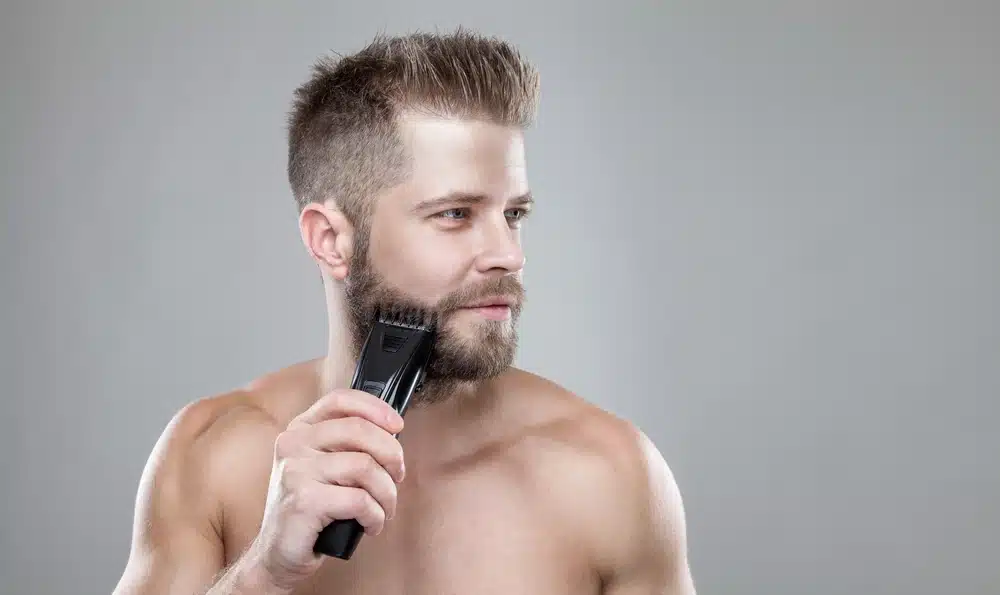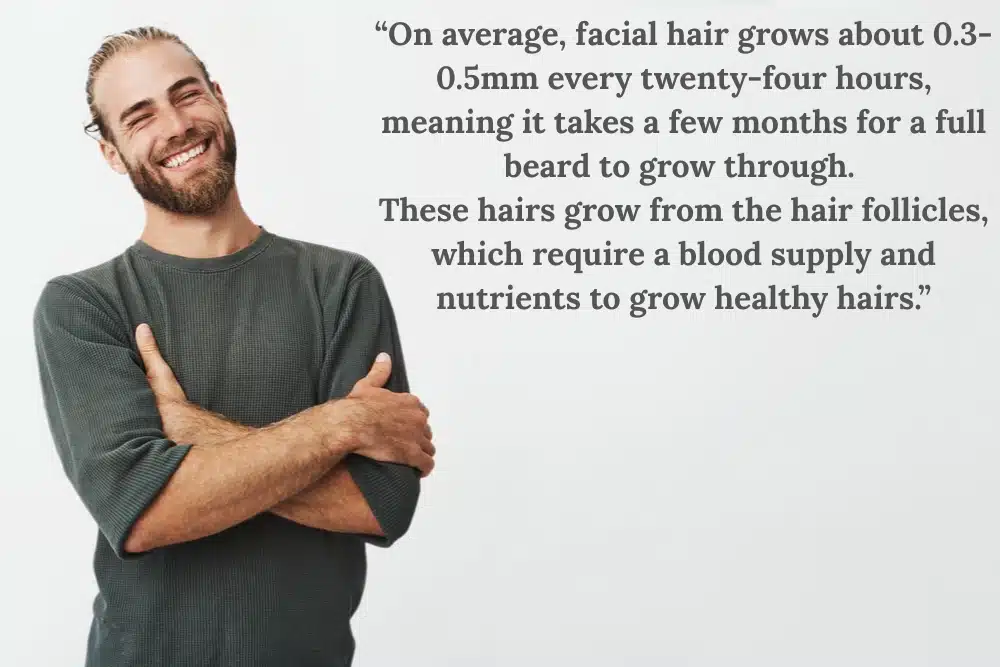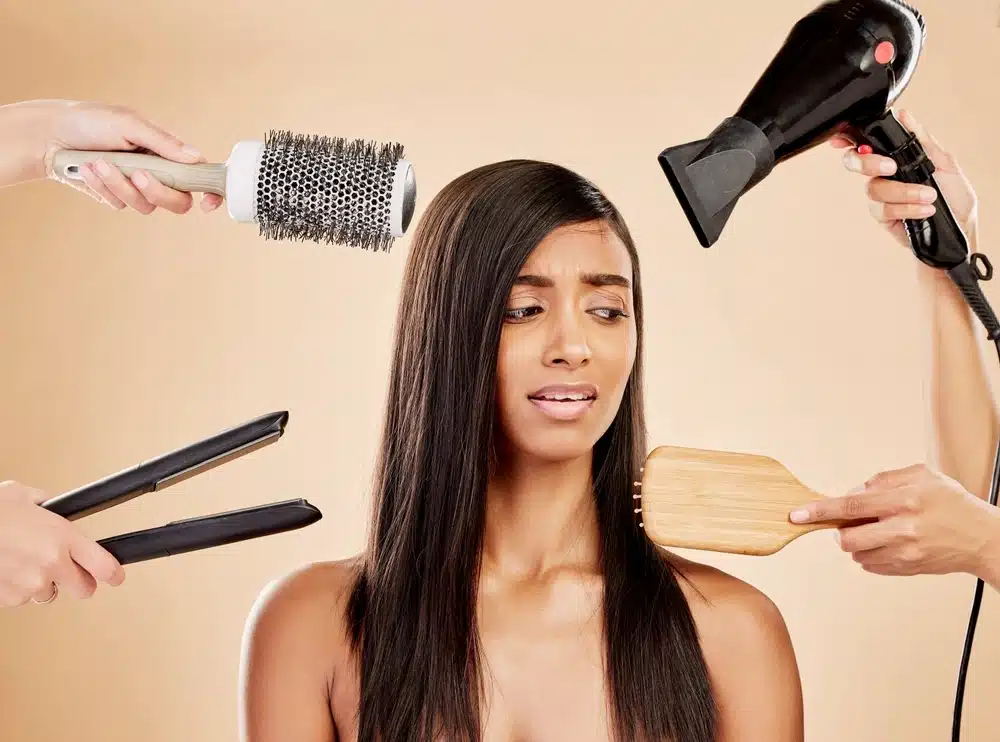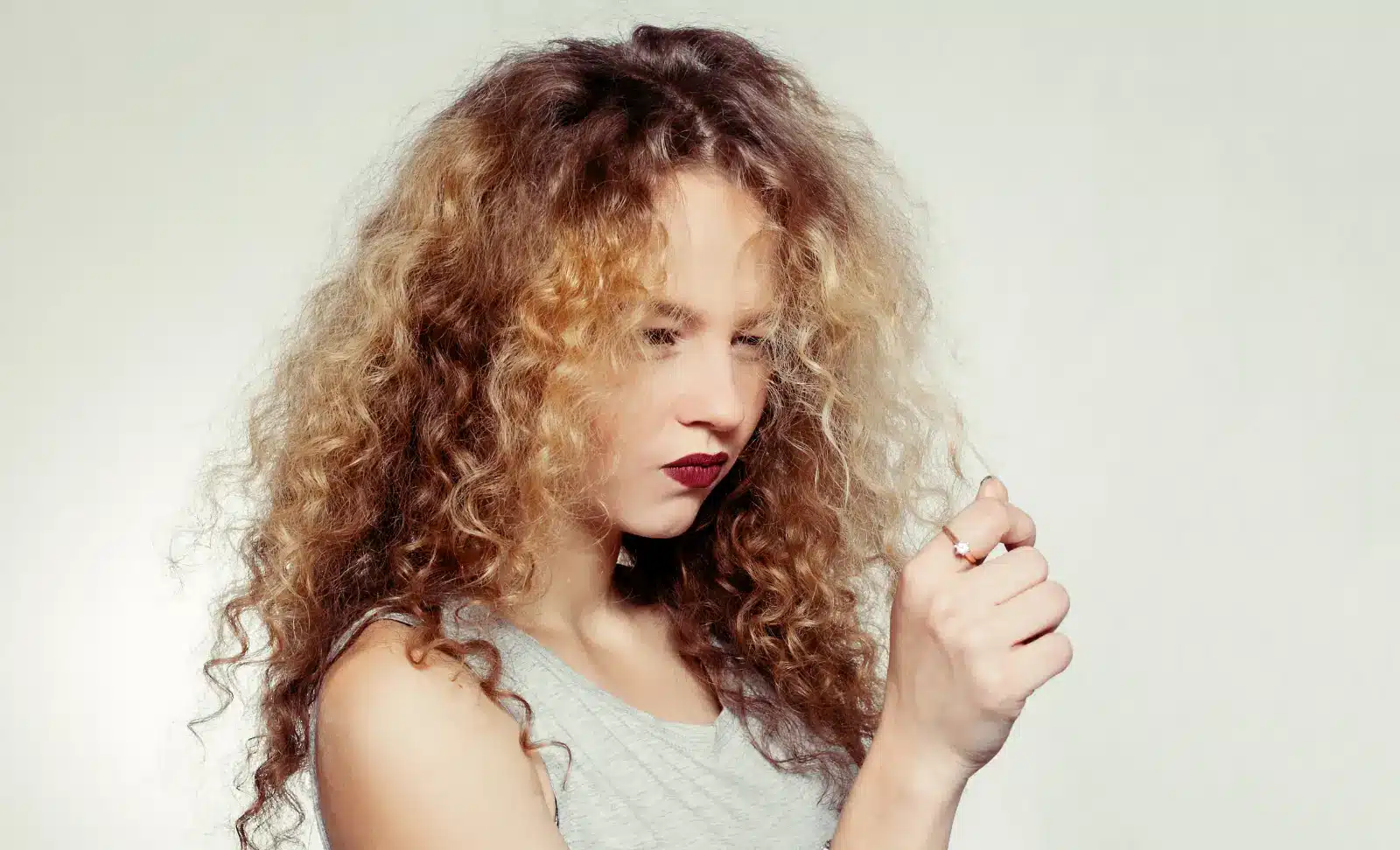Do you look in the mirror and wish your beard was just a little bit thicker? It’s a common experience! However, be careful of the myths out there that claim you can grow your beard with something as simple as a razor, as the results might not be what you expect.
In this guide, learn:
- Do Beards Grow Back Thicker After Shaving?
- What Happens When You Shave a Beard
- Ways to Increase a Beard’s Hair Thickness
- Treating Beard Hair Loss
About Beard Hair Growth
Like all hair on the body, beard hairs go through the hair growth cycle, which includes a growth phase, a transition phase, a resting phase, and a shedding phase. On average, facial hair grows about 0.3-0.5mm every twenty-four hours, meaning it takes a few months for a full beard to grow through. [1] These hairs grow from the hair follicles, which require a blood supply and nutrients to grow healthy hairs.
So – Does Shaving Beard Make It Thicker?
Unfortunately, no – shaving a beard does not make it thicker. This is a common myth that often accompanies the false notion that shaving the legs, arms, or any other part of the body causes the hair to grow back thicker.
What Happens When You Shave Your Beard?
So, why do some people think the answer to, “Does shaving beard make it thicker?” is yes?
It’s all about the way the beard hair grows after being shaved. What happens is the razor cuts the hair, leaving a blunter edge, which is thicker than the finer edges you were used to. When this grows out, it gives the appearance of a slightly thicker beard. However, this doesn’t last long, and it never actually increases the thickness of the beard strands.
Why Do Some Men Have Thicker Beards?
Like many things, it is all about genetics. Much like some people can grow thick, luscious locks all the way down their backs, some people are lucky enough to grow a thick beard from early on in life simply because they inherited those genes.
Of course, some male grooming habits can enhance a beard’s appearance, which we will discuss further below.
What About Waxing the Beard?
Much like the answer to, ‘Does shaving beard make it thicker?’ the answer to, ‘Does waxing the beard make it thicker’ is no.
Waxing a beard (which involves using wax to pull the hair root out from the follicle) is a method that stops growth for longer than shaving. However, the hairs still grow back, and consistent waxing does not permanently stop hair growth.
Looking After Your Beard When Shaving
Shaving does not lead to increased or thicker beard growth. Still, it’s essential to take care of your beard when shaving, as this will enhance its appearance. Here are some tips to follow.
- Always Start with a Clean Beard: To remove any dirt and oil accumulated in the beard, wash it first. This will also make the hair softer, leading to an easier shave. If you have a longer beard, consider trimming first.
- Use Warm Water: Using warm water on the beard area before shaving opens up the pores, allowing for a smoother shave and minimising the risk of razor bumps and general irritation.
- Rinse with Cold Water: After shaving, rinse your face with cold water to close the pores and tighten up the skin.
- Pat Dry: Do not rub the skin dry with a towel, as this can irritate. Instead, use a fresh towel and pat the skin dry.
- Moisturise: Keep the area moisturised after shaving by applying an aftershave balm. This will help hydrate the area and prevent razor burn.
- Use a Beard Oil: A beard oil will nourish the beard hair and add a lot of shine, making it worth using. Additionally, it can aid in styling.
- Finish with a Comb: Unless you opted for a clean-shaven look, always finish by combing the beard through.
Are There Ways to Increase Beard Thickness?
Yes! While shaving will not boost beard hair growth, there are other steps you can take to increase your beard’s thickness (or, in some cases, give the illusion of a thicker beard)
A Healthy Lifestyle: A healthy lifestyle can significantly impact beard growth and overall thickness. A big part of this is diet, as a balanced diet with all the necessary nutrients (such as biotin and zinc) is essential for healthy hair growth. Getting enough sleep, reducing stress, and exercising regularly are also important.
Letting it Grow: Sometimes, patience is key, and that is definitely the case with beard growth. It takes around three months for a full beard to grow through, so wait a little longer before deciding to trim it.
Combing and Massaging the Area: Stimulation can boost blood flow to the area, potentially leading to thicker growth. You can either comb the beard more frequently or gently massage the area from time to time, perhaps using a beard oil.
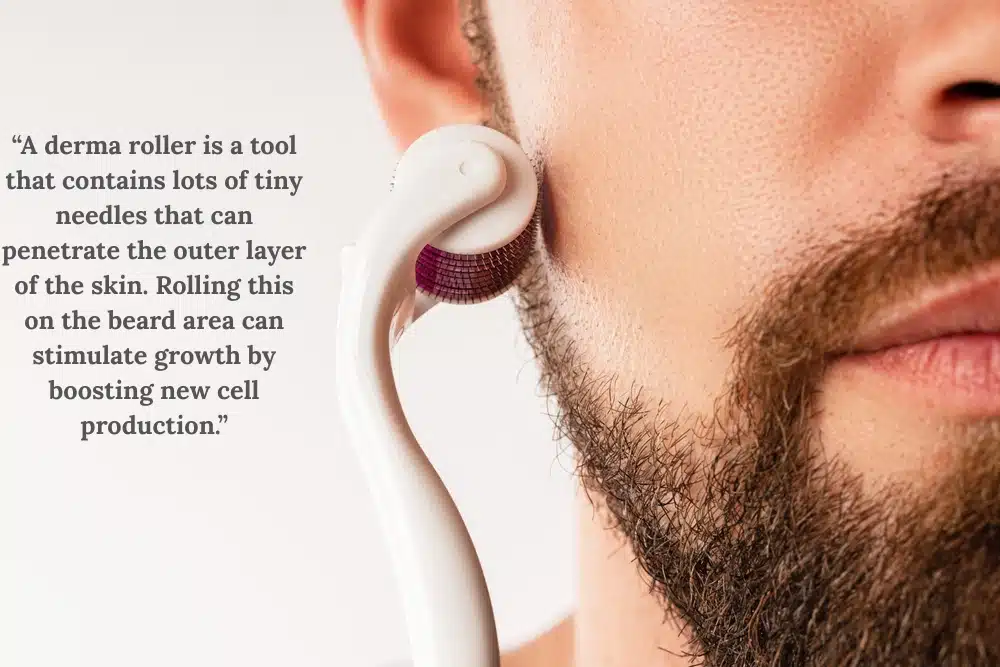
Using a Fibre Powder: To make the beard look thicker, consider using a fibre powder. These fibres bind to the hairs already there, making each beard denser.
Dyeing the Beard: If your beard is particularly light in colour or there are some less thick patches, dyeing the beard can make it appear fuller. Be careful when choosing the dye colour, though, as you want it to be as close to your natural hair as possible, perhaps a couple of shades darker.
Are You Experiencing Beard Hair Loss?
Many people experiencing beard hair loss likely ask the question, ‘Does shaving a beard make it thicker?’ in the hope that it provides a solution, but it doesn’t.
Beard hair loss, also known as alopecia barbae, is a condition where the beard hair falls out, often resulting in patchy bald spots around the facial hair area, including the jawline, chin, and cheeks. The severity of beard hair loss can vary significantly.
There are several potential causes of hair loss in beards. The most common one is an autoimmune reaction. This occurs when the immune system mistakenly attacks the follicles, possibly due to excessive stress, infection, or genetic predisposition.
Ways to Treat Beard Hair Loss
If you are experiencing beard hair loss, you need a specific, targeted beard hair loss treatment. Here are some of the most popular options.
- Minoxidil: Minoxidil is a hair restoration medication commonly used to treat male pattern baldness. While it’s primarily used on the scalp, it can also be applied to the beard area to promote new growth. For optimal results, apply minoxidil twice daily.
- Corticosteroids: Corticosteroids are a type of drug that suppresses the immune system, which can be useful for treating alopecia barbae. These come as both topical and oral treatments.
- Platelet-Rich Plasma Therapy: This is a clinical treatment that involves drawing your blood, processing it, concentrating the platelets, and then injecting those platelets back into your body, specifically targeting the area where you want hair growth – in this case, the facial hair area.
- Microneedling: Microneedling uses a device with tiny needles to puncture the skin. A clinical microneedling treatment can penetrate more deeply than an at-home derma roller device, often yielding better results.
- A Beard Hair Transplant: A beard hair transplant, or facial hair transplant, is a minor surgical procedure that involves harvesting healthy hair follicles from a donor area and then implanting them into the recipient area on the face. The donor area is typically located at the back or side of the scalp; however, you can also use hair from other areas of the body, such as the chest. This process is beneficial as it provides a permanent solution, allowing the patient to grow out their own beard hair once the results are visible.
Should You Get a Beard Hair Transplant?
A FUE beard hair transplant is best for individuals experiencing beard hair loss due to genetics. You should first rule out any medical conditions that may be causing beard hair loss. If it’s just about genetics, a beard hair transplant can provide natural-looking results and a permanent solution. To find out whether you are a good candidate, download our hair track app and book an appointment with the top surgeons in the hair transplant business.
Does Shaving Beard Make It Thicker: Final Thoughts
Does shaving beard make it thicker? No – it doesn’t. However, there are other ways to make the beard look thicker, such as using hair fibre products, dyeing the beard, using a derma roller, and massaging the area. For beard hair loss, you may want more targeted treatments, such as platelet-rich plasma or corticosteroids.
If you are interested in learning more about what a hair transplant can do, you are in the right place. Head over to our patients gallery to see the results we provide.
Sources:
- https://www.healthline.com/health/how-to-grow-a-beard
